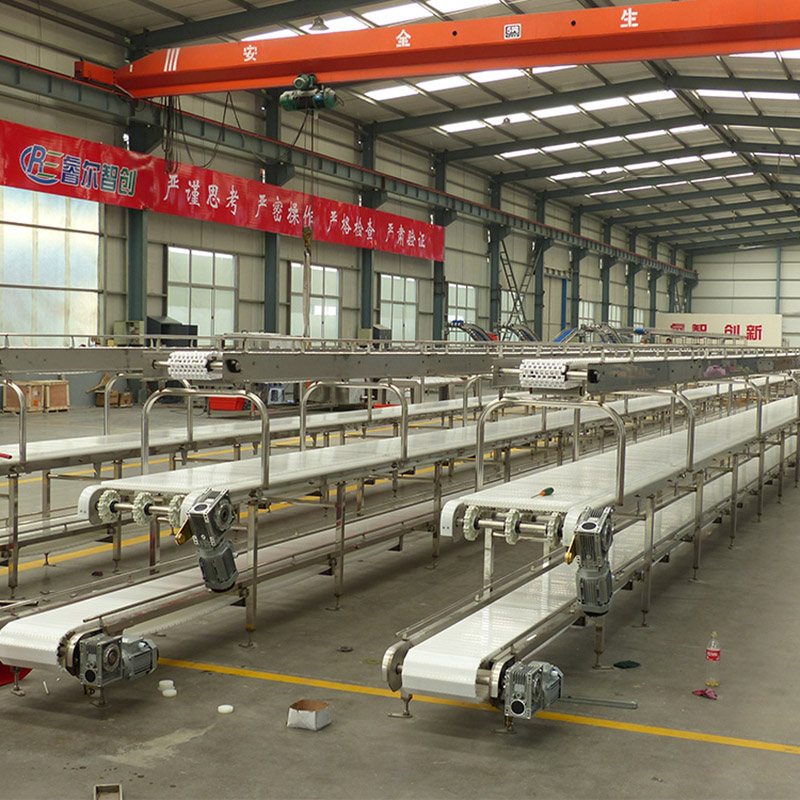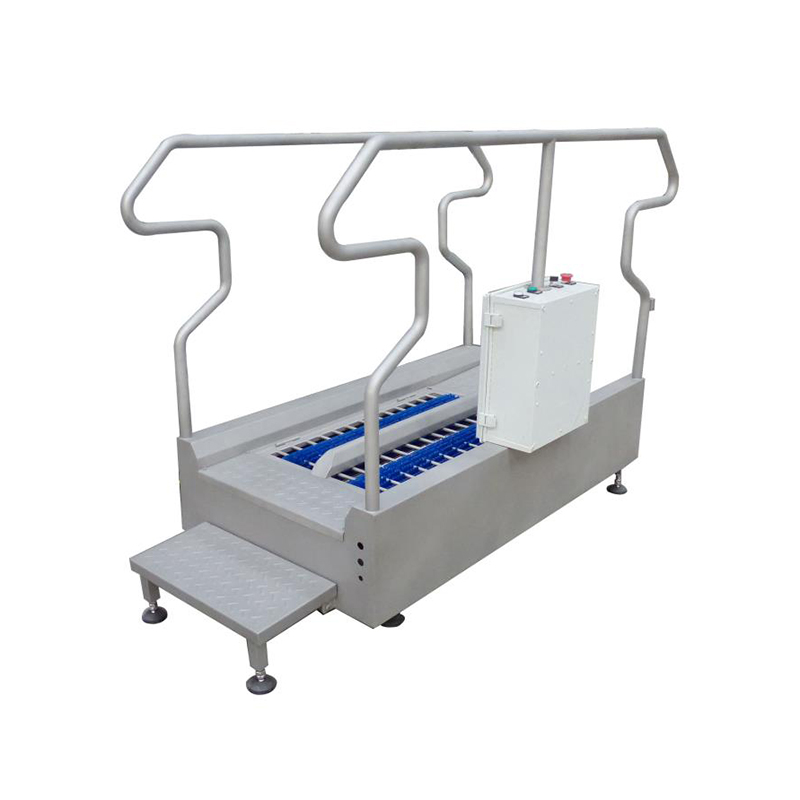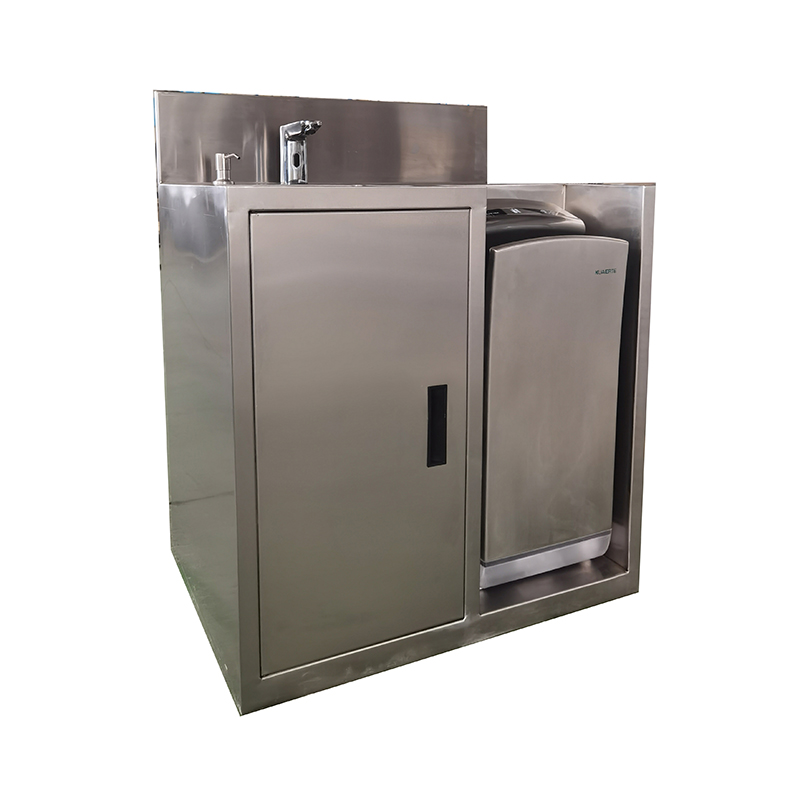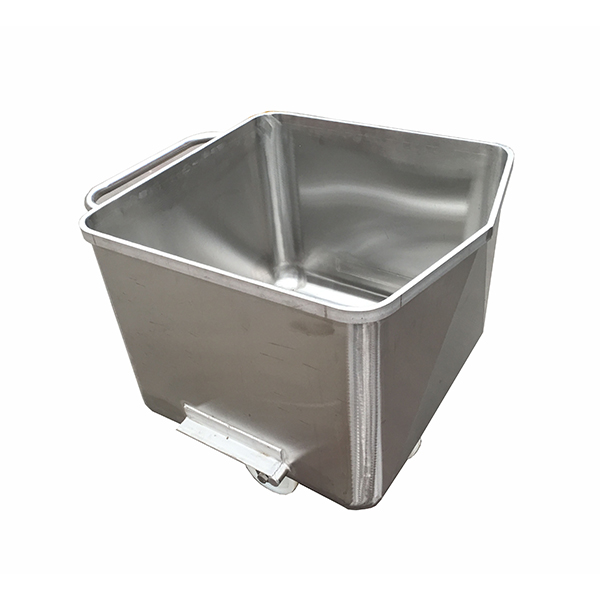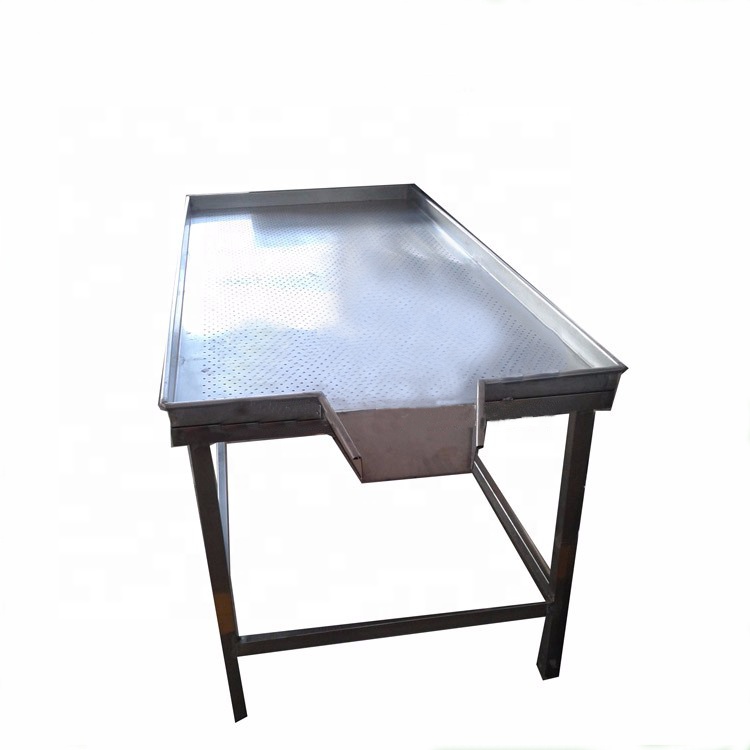Stainless Steel Mobile Workbench Suppliers – Sheep Slaughter Line – Bomeida
Stainless Steel Mobile Workbench Suppliers – Sheep Slaughter Line – Bomeida Detail:
Sheep Slaughter Line
Healthy sheep enter holding pens→Stop eat/drink for 12-24h→Shower before slaughter→Shackling and lifting→Killing→Bleeding(Time:5min) →Sheep Head Cutting→Hind Legs Pre-peeling→Hind Legs Cutting→Front legs and Chest Pre-peeling→Sheepskin Removing→Front Legs Cutting→Rectum sealing→Chest opening→White viscera removal(Put the white viscera in the tray of the white viscera quarantine conveyor for inspection→①②)→Trichinella spiralis inspection→Pre red viscera removal→Red viscera removal(The red viscera are hung on the hook of the red viscera quarantine conveyor for inspection→ ②③)→Carcass Quarantine→Trimming→Weighing →Washing→Chilling (0-4℃)→Meat cutting→Weighing and packaging→Freeze or keep fresh→Cold storage→Cut meat for sale.
① Qualified white viscera enter the white viscera room for processing.Stomach content are transported to the waste storage room about 50 meters outside the workshop through the air delivery system.
②Unqualified carcasses, red and white viscera were pulled out of the slaughtering workshop for high-temperature treatment.
③ Qualified red viscera enter the red viscera room for processing.
This is the introduction of the entire sheep slaughter line.
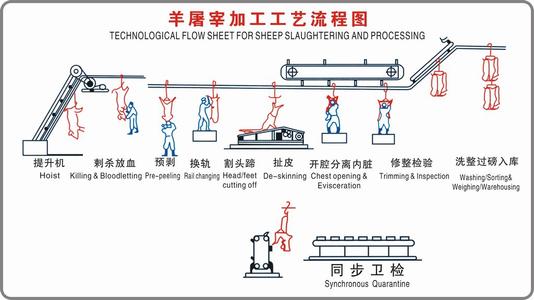
Sheep Slaughter Line
Sheep Slaughtering Line And Process Technology
1. Holding pens managing
(1) Before unloading the truck, you should obtain the certificate of conformity issued by the animal epidemic prevention supervision agency of the place of origin, and observe the vehicle immediately. No abnormality is found, and the truck is allowed to be unloaded after the certificate matches the goods.
(2) After counting the head count, pat the healthy sheep into the pen to be slaughtered by tapping, and carry out the division management according to the health of the sheep. The area of the pen to be slaughtered is designed according to 0.6-0.8m2 per sheep.
(3) The sheep to be slaughtered should be kept without food for 24 hours before being sent to slaughter to eliminate fatigue during transportation and return to normal physiological state. During the resting period, quarantine personnel will observe regularly, and if suspiciously sick sheep are found, they should be sent to isolation pens for observation to confirm the disease The sheep are sent to the emergency slaughter room for treatment, and the healthy and qualified sheep should stop drinking water 3 hours before the slaughter.
2. Killing and Bleeding
(1) Horizontal bloodletting: The live sheep are transported to by a V-shaped conveyor, and the sheep are stunned with a hand hemp appliance during the transportation on the conveyor, and then the bloodletting is stabbed with a knife on the bloodletting table.
(2) Inverted bloodletting: The live sheep is tied to a hind leg with a bloodletting chain, and the wool sheep is lifted into the track of the automatic bloodletting line by the hoist or the lifting device of the bloodletting line, and then the bloodletting is stabbed with a knife.
(3) The track design of the sheep bloodletting automatic conveyor line is no less than 2700mm from the floor of the workshop. The main processes completed on the sheep bloodletting automatic conveyor line: hanging, (assassing), draining, removing the head, etc., draining time Generally designed for 5min.
3. Pre-peeling and Sheepskin Removing
(1) Pre-stripping upside down: Use a fork to spread the two hind legs of the sheep to facilitate the pre-stripping of the front legs, hind legs and chest.
(2) Balanced pre-stripping: the hook of the bloodletting/pre-strippin automatic conveyor line hooks one hind leg of the sheep, and the hook of the automatic skin pulling conveyor hooks the two front legs of the sheep. The speed of the two automatic lines advances synchronously. The abdomen of the sheep is facing up and the back is facing down, moving forward in balance, and pre-skinning is carried out during the transportation process. This pre-stripping method can effectively control the wool sticking to the carcass during the pre-stripping process.
(3). Clamp the sheepskin with the leather clamping device of the sheep peeling machine, and tear off the whole sheepskin from the back leg to the front leg of the sheep. According to the slaughtering process, it can also be pulled off from the front leg to the back leg of the sheep. Whole sheepskin.
(4) Transport the ripped sheepskin to the sheepskin temporary storage room through the sheepskin conveyor or the sheepskin air conveying system.
4. Carcass processing
(1) Carcass processing station: chest opening, white viscera removal, red viscera removal, carcass inspection, carcass trimming, etc. are all completed on the automatic carcass processing conveyor line.
(2) After opening the chest cavity of the sheep, remove the white internal organs, namely the intestines and belly, from the chest of the sheep. Put the removed white viscera into the tray of the synchronous sanitation inspection line for inspection.
(3) Take out the red internal organs, namely the heart, liver, and lungs. Hang the taken out red viscera on the hook of the synchronous sanitation inspection line for inspection.
(4) The sheep carcass is trimmed, and after trimming, it enters the orbital electronic scale to weigh the carcass. Grading and stamping are performed according to the weighing results.
5. Carcass processing
(1)Carcass processing station:carcass trimming,rectum sealing,genital cutting, chest opening,white viscera removing,quarantine of trichinella spiralis,pre red viscera removing,red viscera removing,splitting,quarantine,leaf fat removal,etc,
all are done on the carcass automatic processing line.The rail design of pig carcass process line is not lower than 2400mm from the floor of the workshop.
(2)The dehaired or dehided carcass is lifted by the carcass lifting machine to the rail of the carcass automatic conveying line,The dehaired pig need singeing and washing;The dehided pig need carcass trimming.
(3)After opening the chest of the pig, remove the white viscera from the pig’s chest, namely intestines, tripe.Put the white viscera into the tray of white viscera quarantine conveyor for inspection.
(4)Remove the red viscera, namely the heart, liver and lungs.Hang the removed red viscera on the hooks of red viscera synchronous quarantine conveyor for inspection.
(5)Divide the pig carcass in half using a belt type or bridge type splitting saw along the pig’s spine,the vertical acceleration machine should be installed directly above the bridge type splitting saw.Small slaughterhouses use reciprocating type splitting saws.
(6)After dehaired pig splitting, remove the front hoof,the back hoof and the pig tail,the removed hoof and tail are transported by cart to the processing room.
(7)Remove the kidneys and the leaf fat,the removed kidneys and leaf fat are transported by cart to the processing room.
(8)Pig carcass for trimming,after trimming,the carcass enter the track electronic scales to be weighed. Classification and seal according to the result of weighing.
6. Synchronous sanitation inspection
(1) Sheep carcass, white viscera, and red viscera are transported to the inspection area for sampling and inspection through the synchronous sanitary inspection line.
(2) Suspicious diseased carcasses that failed the inspection will enter the suspicious diseased carcass track through the switch and re-inspect to confirm that the diseased carcass enters the diseased track line. Remove the diseased carcass and put it in the closed car and pull it out of the slaughterhouse for processing. .
(3) The unqualified white viscera shall be taken out from the tray of the synchronous sanitation inspection line, put into the closed car and pulled out of the slaughterhouse for processing.
(4) The red viscera that fails the inspection shall be removed from the hook of the synchronous sanitary inspection line, put into the closed car and pulled out of the slaughterhouse for processing.
(5) The red viscera hook and white viscera tray on the synchronous sanitary inspection line are automatically cleaned and disinfected by cold-hot-cold water.
7. By-product processing
(1) Qualified white viscera enters the white viscera processing room through the white viscera chute, pour the stomach contents in the belly and intestines into the air delivery tank, fill with compressed air, and transport the stomach contents through the air delivery pipe to the slaughter About 50 meters outside the workshop, the tripe was washed by a tripe washing machine. Pack the cleaned intestines and belly into a cold storage or fresh-keeping warehouse.
(2) Qualified red viscera enter the red viscera processing room throughthe red visceral chute, clean the heart, liver, and lungs, and pack them into a cold storage or fresh-keeping warehouse.
8. carcass acid excretion
(1) Put the trimmed and washed lamb carcass into the acid-discharging room for “discharging”, which is an important part of the lamb cold cutting process.
(2) The temperature between acid discharge: 0-4℃, and the acid discharge time does not exceed 16 hours.
(3) The height of the acid discharge track design from the floor of the acid discharge room is not less than 2200mm, the track distance: 600- 800mm, and the acid discharge room can hang 5-8 sheep carcasses per meter of track.
9. Deboning and packaging
(1) Hanging deboning: push the lamb carcass after deacidification to the deboning area, and hang the lamb carcass on the production line. The deboning staff puts the cut large pieces of meat on the cutting conveyor and automatically transmits them to the cutting staff. There are division personnel to divide the meat into various parts.
(2) Cutting board deboning: Push the carcass of the sheep to the deboning area after deacidification, and take the sheep carcass off the production line and place it on the cutting board for deboning.
(3) After the cut meat is vacuum packaged, put it in the freezing tray and push it to the freezing room (-30℃) for freezing or to the finished product cooling room (0-4℃) to keep it fresh.
(4) Pack the frozen product pallets and store them in the refrigerator(-18℃).
(5) Temperature control of deboning and segmentation room: 10-15℃, temperature control of packaging room: below 10℃.
Details Picture
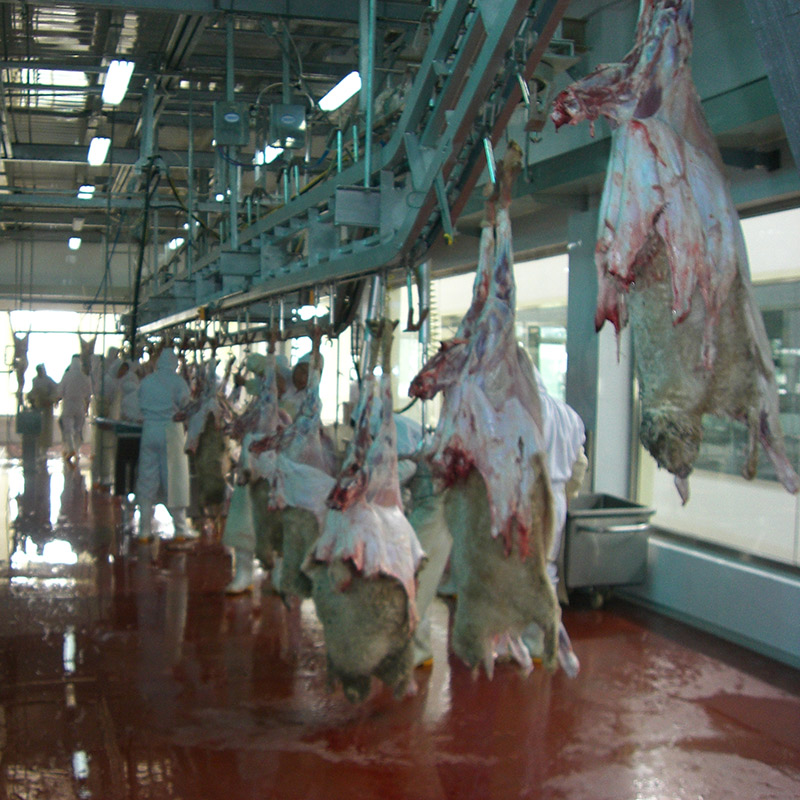
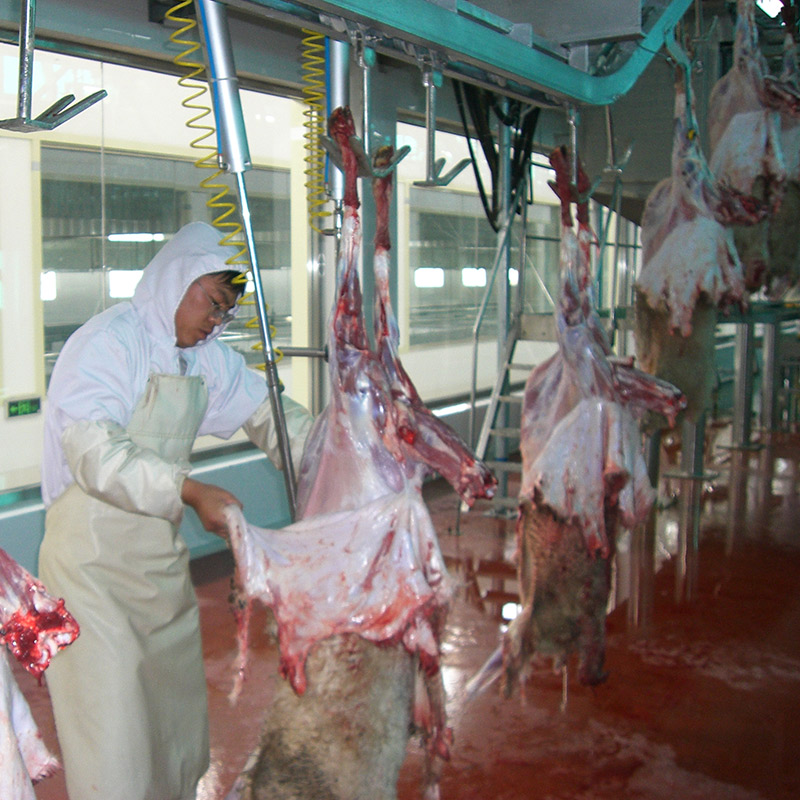
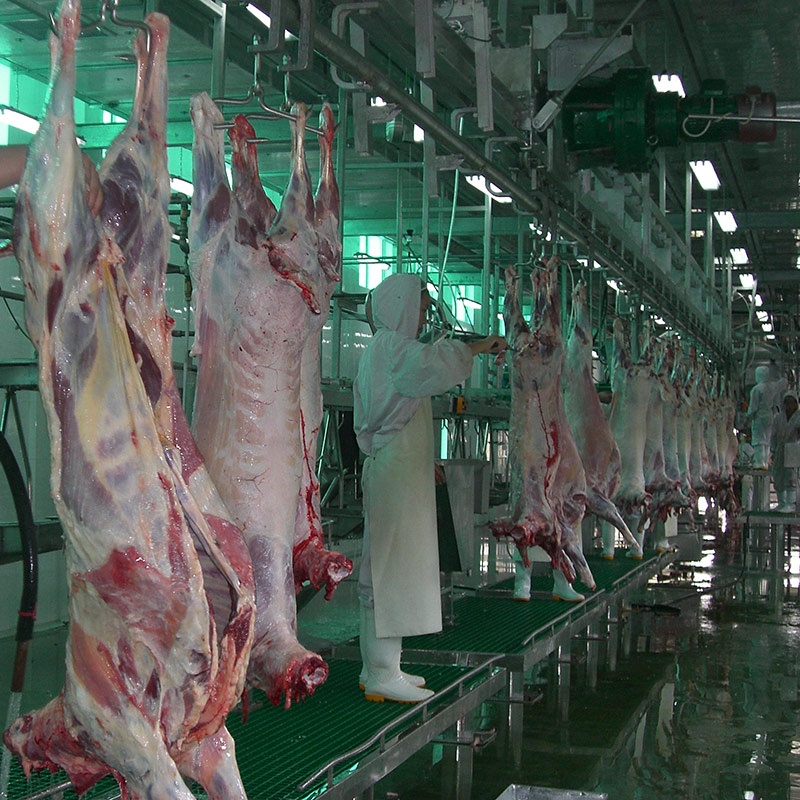
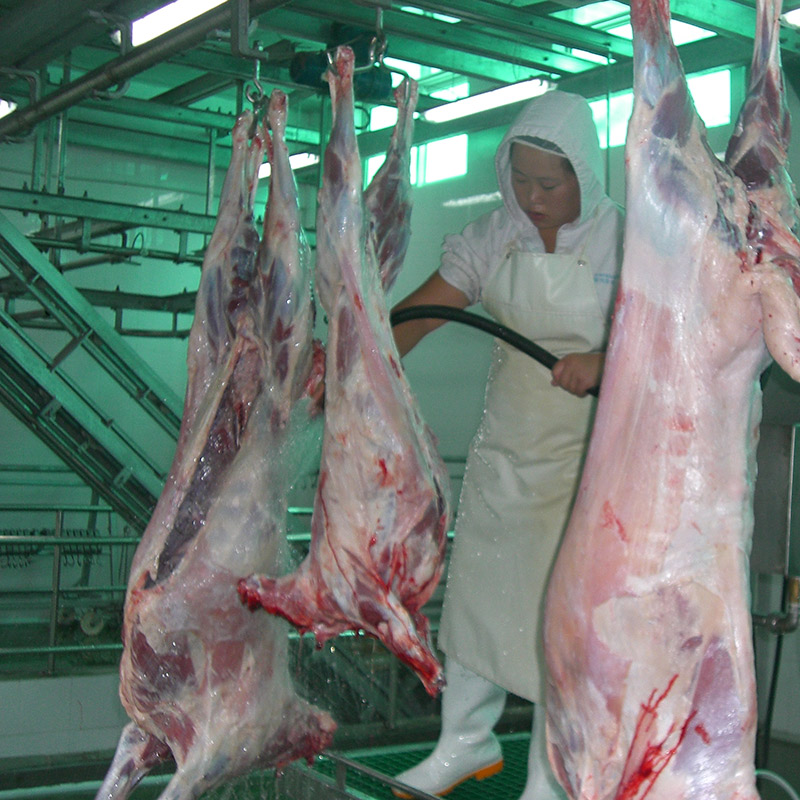
Product detail pictures:


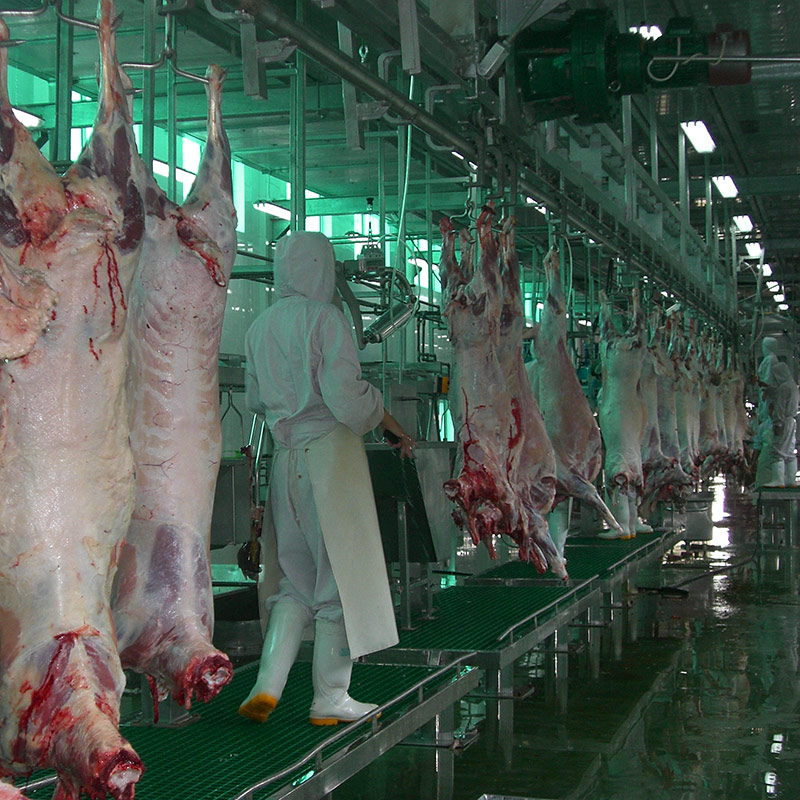


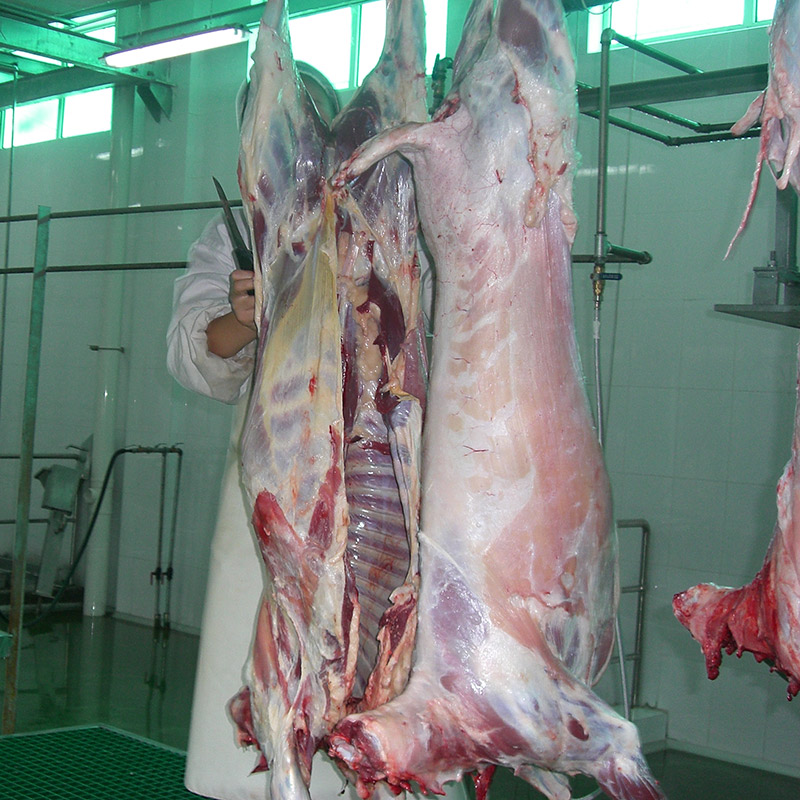
Related Product Guide:
The customer satisfaction is our primary goal. We uphold a consistent level of professionalism, quality, credibility and service for Stainless Steel Mobile Workbench Suppliers – Sheep Slaughter Line – Bomeida, The product will supply to all over the world, such as: Niger, Danish, Stuttgart, In order to meet the increasing requirement of customers both home and aboard, we will keep carrying forward the enterprise spirit of "Quality, Creativity, Efficiency and Credit" and strive to top the current trend and lead fashion. We warmly welcome you to visit our company and make cooperation.
The company comply with the contract strict, a very reputable manufacturers, worthy a long-term cooperation.

